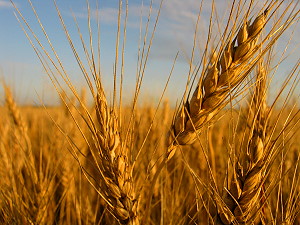 Northwest Region Crop Report Prepared by: Manitoba Agriculture
Northwest Region Crop Report Prepared by: Manitoba Agriculture
September 1, 2020 |
Northwest Region
Despite a mix of weather conditions this week, some harvest progress was made in the Northwest region. Highest daytime temperature reaching 27°C across the region and dipping down into the single digit temperatures overnight, along with a couple of days with precipitation slowed harvest progress.
Field pea harvest for the region is winding down for much of the region with approximately 15 to 20% left to combine in the Swan Valley area. Yields in the Swan River/Roblin region have been good with 70 to 80 bu/acre; 70 to 90bu/ac in Roblin area; 60 to 65bu/ac in Grandview.
Spring wheat harvest has been progressing with about 10% complete in Swan Valley/Roblin regions and 20% combined in Dauphin region. No reported yields as of yet. Some Barley has been harvested and some oats have been swathed.
Canola is podded and continues to mature. Desiccation and swathing continues as stages are reached and conditions allow. A small start to canola harvest in the southern part of the region. The Canola crop in The Pas is less advanced with only 5 to 10% swathed, and lower quality and yield are expected. Flax continues to ripen. Soybeans are mostly at R6 with a few fields at R5 and some fields heading towards ripening in the southern part of the region. Fababeans also continue to mature.
Majority of cereal silage and greenfeed has been put up with the exception of later seeded fields. Baling of cereal straw is occurring when harvest can resume between rains.
Grasshopper infestations remain a problem in the Ethelbert area and forage shortfalls are anticipated there. Corn silage fields look good and with a few more weeks without frost, they will help secure additional required feed, particularly in the eastern areas where more shortages are anticipated. Pasture conditions are variable across the region dependent on management and moisture received. In the Westlake area, pastures and water supplies are very poor. In other areas, water for livestock is adequate.
